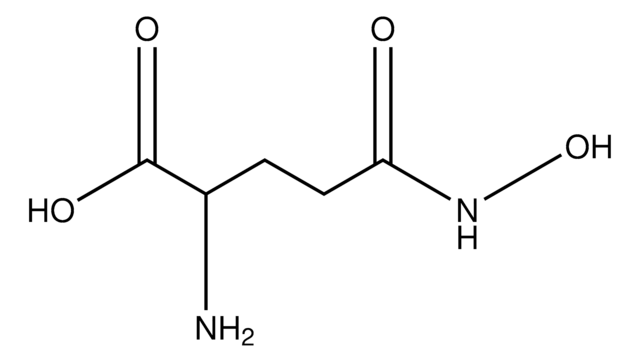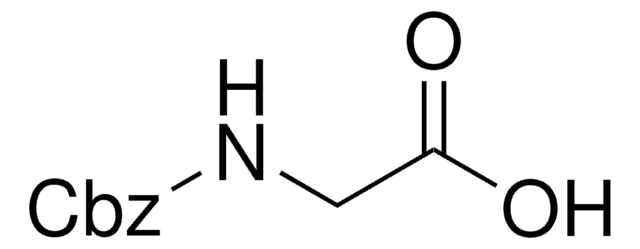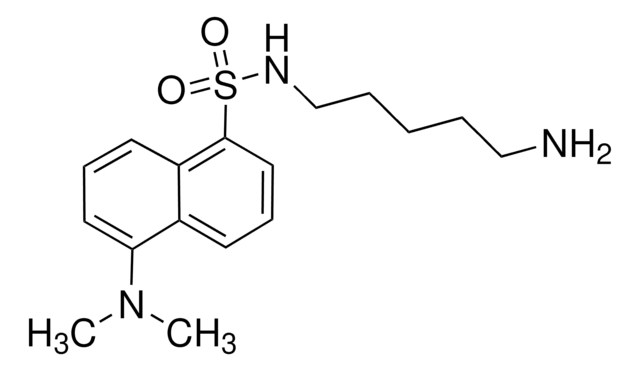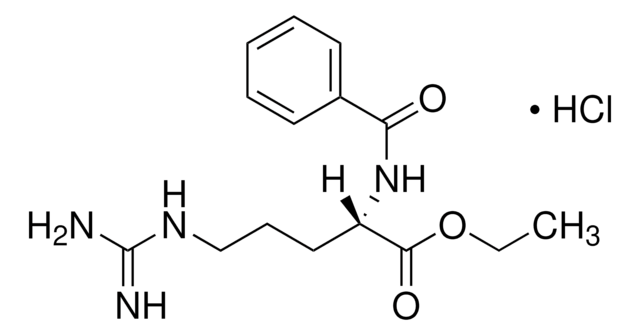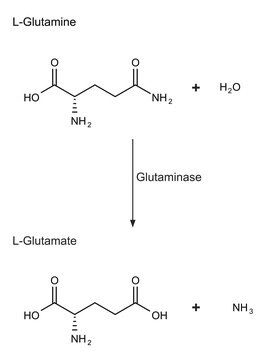C6154
Z-Gln-Gly
γ-glutamyl donor substrate
Synonym(s):
N2-[(phenylmethoxy)carbonyl]-L-glutaminyl-glycine
Sign Into View Organizational & Contract Pricing
All Photos(1)
About This Item
Empirical Formula (Hill Notation):
C15H19N3O6
CAS Number:
Molecular Weight:
337.33
MDL number:
UNSPSC Code:
12352209
PubChem Substance ID:
NACRES:
NA.26
Recommended Products
Quality Level
form
powder
storage temp.
−20°C
SMILES string
NC(=O)CCC(NC(=O)OCc1ccccc1)C(=O)NCC(O)=O
InChI
1S/C15H19N3O6/c16-12(19)7-6-11(14(22)17-8-13(20)21)18-15(23)24-9-10-4-2-1-3-5-10/h1-5,11H,6-9H2,(H2,16,19)(H,17,22)(H,18,23)(H,20,21)
InChI key
SOUXAAOTONMPRY-UHFFFAOYSA-N
Amino Acid Sequence
Z-Gln-Gly
Application
γ-Glutamyl donor substrate used in spectrophotometric determination of transglutaminase (TGase) activity. Z-Gln-Gly was used to enzymatically synthesize N-linked neoglycoproteins.
Biochem/physiol Actions
N-Benzyloxycarbonyl-L-Glutaminylglycine (Z-Gln-Gly, Z-QG) is used as a substrate to differentiate and characterize transglutaminase(s) (TGase) that catalyzes the post-translational covalent cross-linking of Gln- and Lys-containing peptides. Z-QG supports glutamyl-level cross-linking applications thruough surface modification.
Storage Class Code
11 - Combustible Solids
WGK
WGK 3
Flash Point(F)
Not applicable
Flash Point(C)
Not applicable
Personal Protective Equipment
dust mask type N95 (US), Eyeshields, Gloves
Choose from one of the most recent versions:
Already Own This Product?
Find documentation for the products that you have recently purchased in the Document Library.
Customers Also Viewed
D Ramos et al.
The Journal of organic chemistry, 66(9), 2948-2956 (2001-04-28)
A novel methodology for the enzymatic preparation from suitably derivatized oligosaccharides of N-linked neoglycopeptides using the microbial glutaminyl-peptide gamma-glutamyl transferase, transglutaminase (TGase), is described. N-Allyl glycosides of various oligosaccharides were photochemically coupled with cysteamine to yield amino-terminated thioether spacers, which
Kyunga Sung et al.
Biotechnology journal, 5(5), 456-462 (2010-03-12)
A chemically modified glass surface displaying a glutamyl donor substrate peptide (Z-QG) was developed for microbial transglutaminase (MTG)-mediated immobilization of recombinant proteins tagged with an MTG-reactive lysine-containing substrate peptide (K-tag). To evaluate the surface modification conditions affecting the enzymatic protein
Dongdong Mu et al.
Applied microbiology and biotechnology, 102(13), 5533-5543 (2018-04-25)
Microbial transglutaminase (MTG) from Streptomyces mobaraensis has been widely used for crosslinking proteins in order to acquire products with improved properties. To improve the yield and enable a facile and efficient purification process, recombinant vectors, harboring various heterologous signal peptide-encoding
Rui P Queirós et al.
Food research international (Ottawa, Ont.), 115, 73-82 (2019-01-03)
Microbial transglutaminase (MTG) is an enzyme largely used in the food industry, mainly to improve food texture. However, many globular proteins show low susceptibility to the action of this enzyme. High-pressure processing (HPP), being able to change protein conformation, may
Ahmed Besheer et al.
Journal of pharmaceutical sciences, 98(11), 4420-4428 (2009-01-22)
Polymer-drug and polymer-protein conjugates are promising candidates for the delivery of therapeutic agents. PEGylation, using poly(ethylene glycol) for the conjugation, is now the gold standard in this field, and some PEGylated proteins have successfully reached the market. Hydroxyethyl starch (HES)
Our team of scientists has experience in all areas of research including Life Science, Material Science, Chemical Synthesis, Chromatography, Analytical and many others.
Contact Technical Service